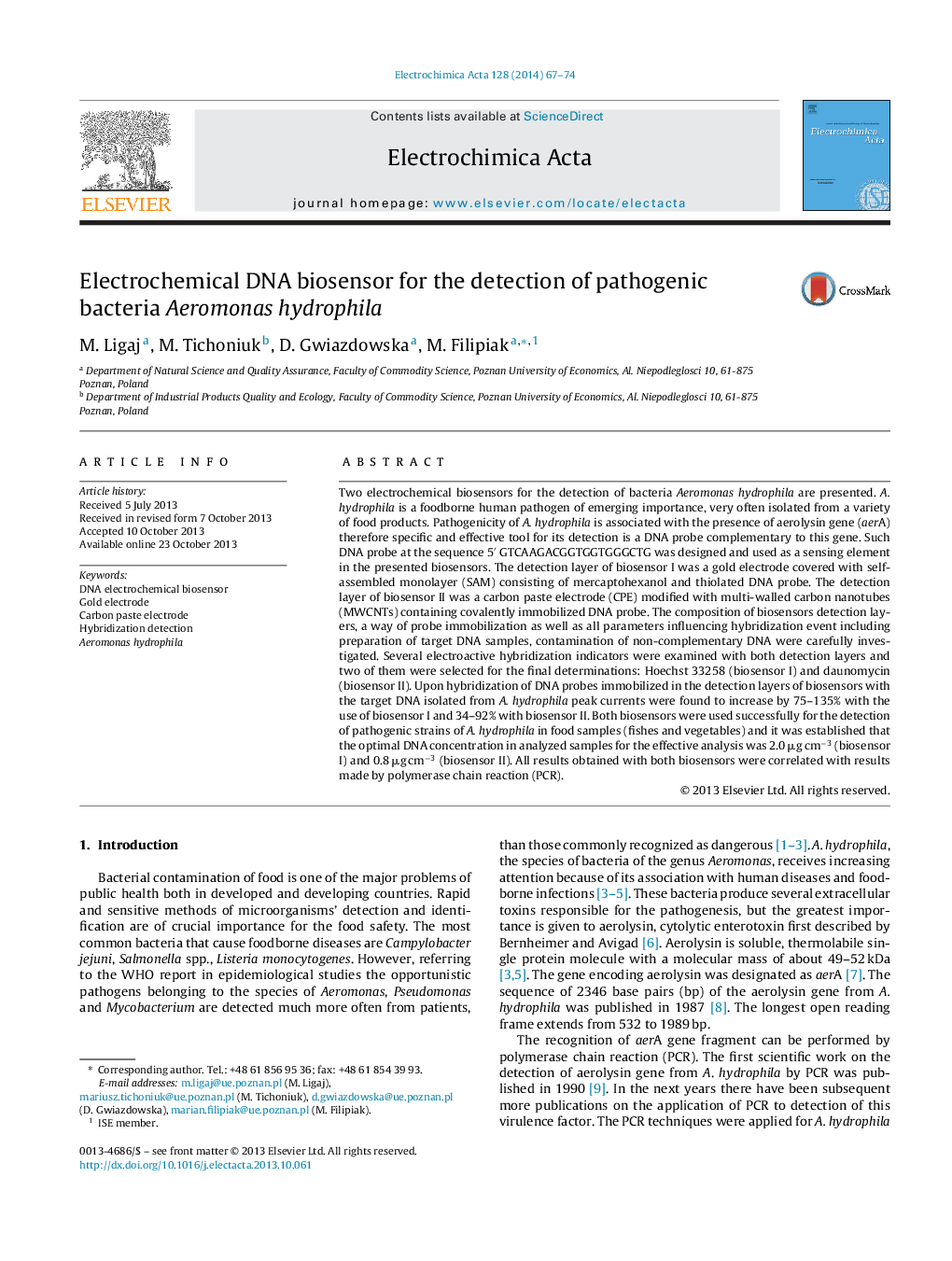| Article ID | Journal | Published Year | Pages | File Type |
|---|---|---|---|---|
| 186075 | Electrochimica Acta | 2014 | 8 Pages |
•Two electrochemical biosensors for the detection of pathogenic bacteria Aeromonas hydrophila producing aerolysin are reported.•The detection layer of biosensor I was a gold electrode covered with self-assembled monolayer (SAM) consisting of mercaptohexanol and thiolated DNA probe.•The detection layer of biosensor II was a carbon paste electrode (CPE) modified with multi-walled carbon nanotubes (MWCNTs) containing covalently immobilized DNA probe.•Hybridization was detected by using selected indicators: Hoechst 33258 (biosensor I) and daunomycin (biosensor II).•The biosensors were used successfully for the detection of pathogenic strains of A. hydrophila in food samples (fish and vegetables).
Two electrochemical biosensors for the detection of bacteria Aeromonas hydrophila are presented. A. hydrophila is a foodborne human pathogen of emerging importance, very often isolated from a variety of food products. Pathogenicity of A. hydrophila is associated with the presence of aerolysin gene (aerA) therefore specific and effective tool for its detection is a DNA probe complementary to this gene. Such DNA probe at the sequence 5′ GTCAAGACGGTGGTGGGCTG was designed and used as a sensing element in the presented biosensors. The detection layer of biosensor I was a gold electrode covered with self-assembled monolayer (SAM) consisting of mercaptohexanol and thiolated DNA probe. The detection layer of biosensor II was a carbon paste electrode (CPE) modified with multi-walled carbon nanotubes (MWCNTs) containing covalently immobilized DNA probe. The composition of biosensors detection layers, a way of probe immobilization as well as all parameters influencing hybridization event including preparation of target DNA samples, contamination of non-complementary DNA were carefully investigated. Several electroactive hybridization indicators were examined with both detection layers and two of them were selected for the final determinations: Hoechst 33258 (biosensor I) and daunomycin (biosensor II). Upon hybridization of DNA probes immobilized in the detection layers of biosensors with the target DNA isolated from A. hydrophila peak currents were found to increase by 75–135% with the use of biosensor I and 34–92% with biosensor II. Both biosensors were used successfully for the detection of pathogenic strains of A. hydrophila in food samples (fishes and vegetables) and it was established that the optimal DNA concentration in analyzed samples for the effective analysis was 2.0 μg cm−3 (biosensor I) and 0.8 μg cm−3 (biosensor II). All results obtained with both biosensors were correlated with results made by polymerase chain reaction (PCR).
